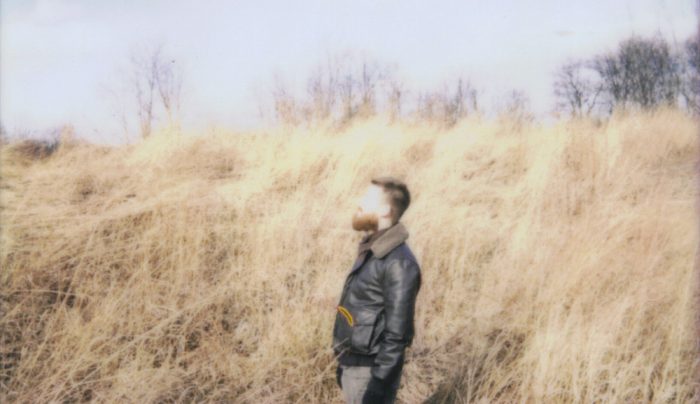“We shall not cease from exploration, and the end of all our exploring will be to arrive where we started and know the place for the first time.” ~ T.S. Eliot
~
It’s mid-January.
I’m walking through the streets of Berlin, a city known for long, harsh winters.
The scene fits the stereotype; I dodge and weave hooded pedestrians, veiled by sleet, chilled by zero-degree breeze.
As I absorb my surroundings, I’m enveloped by a sense of calm. I suddenly notice this ordinary stroll is anything but ordinary.
Instead of darkness, I see an illuminated skyline, effervescent, electric blue. I see puddles coloured by the luminosity of streetlights, a waltz of green, orange, red. I see the morning commute join the dance, as cars reflect. I see trees radiate silk, their bark saturated with morning mist.
I hear the crinkle of soft wrapping paper, the gentle unfolding of tyres on tarmac, slower than usual. The wind, a welcome wake-up call, whispers through leaves, its usual frequency cushioned by raindrops.
I see beauty in a landscape I’d previously seen as miserable.
Finding the Reality of Winter Beauty
Psithurism: the sound of rustling leaves or wind in trees.
In autumn, as leaves fell and temperatures plummeted, I noticed an association between summer and beauty. Over the years, mindfulness has helped make winter bearable, fine, okay.
This year, I set myself a challenge; I didn’t want to tolerate the winter, but to fully appreciate it. Enjoying a warm summer’s day is one thing, but a cold, wet Monday in January?
For many, the reality of winter has always been challenging. Reality is considered an objective fact, yet we each form subjective realities based on the way we process stimuli from the external world. Mindlessly relating to the world isn’t relating to the world at all, but responding to a concept of how the world is. This is our default reality, a symptom of the busy, thinking mind.
On one level, the quality of our reality is dictated by the quality of our thoughts. Cognitive Behavioural Therapy (CBT)—an effective therapeutic model based on Stoicism—is a testament to how thoughts shape worldview. The basis of CBT is challenging irrational thinking patterns, known as cognitive distortions. These distortions form an inaccurate, or irrational, perception of reality.
Mindful Labelling
Apricity: the warmth of the sun in winter.
Identification with the conceptual mind is mostly autopilot. This unreality is intoxicating.
The CBT approach untangles and rationalises thinking patterns, changing behaviour, and forms new habits.
Mindfulness goes further. It cultivates conscious self-awareness of the unreality, revealing its illusion. Breathing space between the “observer” and thought highlights the process of labelling and conceptualising our experience, in the moment, in retrospect, or in future projection.
The first step in uncovering the beauty of winter is noticing the labels you hold in your conceptual mind.
In her pioneering book, Mindfulness, Ellen Langer highlights the importance of flexibility in creating new, self-serving labels. Mindfulness, in this framework, is the ability to dynamically label. Generally, we assign negative labels to winter. My labels included “miserable,” “depressing,” “ugly.” In contrast, labels for summer included “glorious,” “beautiful.”
Labels are symbols for stimuli—with added judgement. For example, “miserable” is an emotionally charged word symbolising low mood, dire circumstances, misery. When we see dark clouds and rain, and assign the label “miserable,” we’re assigning these attributes to weather. Mindfulness encourages us to see the stimuli as it is, without cognitive projection.
The Cultural Conditioning of Miserable Winters
Williwaw: a violent squall that blows in near-polar latitudes, as in the Strait of Magellan, Alaska, and the Aleutian Islands.
“We see a lot of almost hyper-positive thoughts about summer,” Dr. Kelly Rohan, an expert in Seasonal Affective Disorder (SAD), told me. “As well as really global negative thoughts about winter.” Rohan, director of clinical training at the University of Vermont, and her team have spent over 12 years researching CBT as a treatment model for SAD.
SAD has long been viewed a purely biological response to a lack of sunlight and changes in circadian rhythm. While environmental factors have an impact, Rohan’s research proves SAD-tailored CBT is just as effective as light therapy short-term, and even more effective in preventing relapse. This is an empowering discovery.
But that isn’t the most fascinating aspect of Rohan’s research. Her laboratory created an experiment illustrating how worldviews are conditioned and linked with seasonal differentiations in mood. Her team showed digital photographs, with clear depictions of the seasons, to SAD sufferers. Even when summer outside the lab, SAD sufferers responded negatively to pictures of winter.
“Even their bodies are reacting in a way that would signal this is something aversive,” Rohan said. “They’re emotionally reactive to what they’re seeing.” Healthy controls showed no change when viewing the same images, leading Rohan to view SAD as a “learned or conditioned response” to the stimuli of winter.
Changing the response to stimuli can have huge benefits, not only for SAD sufferers, but all of us. So how do we do it?
Nurturing the Artistic Eye with Contemplative Photography
Crepuscular ray: a twilight ray of sunlight shining through breaks in high clouds and illuminating dust particles in the air.
Mindful seeing is beyond thought, but it’s not a magical, elusive experience. Instead, it requires mindful practice and training of the artistic eye. “Living artistically means seeing and caring for the details of your world,” Andy Karr and Michael Wood write in The Practice of Contemplative Photography. “What matters isn’t how luxurious your surroundings are, but how much you can appreciate the richness and freshness of your experience.”
A camera isn’t necessary to benefit from the contemplative approach. Though directed at photography, the technique is based on Buddhist principles of clear seeing. The aim? To appreciate the genuine, inherent beauty in each moment. Not by chasing the spectacular, but by finding exquisite in the ordinary. To see form clearly, to notice the range of colours and textures as colours and textures, to avoid applying labels and concepts.
The Twenty-Shot Assignment is an exercise intended to develop this approach. The photographer spends 15 minutes observing a subject, and another 15 minutes shooting at least 20 photographs. Subjects must be mundane, and include a garbage dumpster, a kitchen sink, a garage wall.
It turns out, watching paint dry can be enthralling. But it’s all down to perception.
The Difference Between Perception and Conception
Cirriform: clouds composed of ice crystals.
Karr and Wood eloquently explain perception and conception. The former connects consciousness with the eye. The latter connects consciousness with conceptual mind—the judgemental labelling system previously discussed. Perception is the lucid way of seeing, yet it’s difficult to sustain. Almost instantly, moments of perception can be hijacked by the thinking mind.
I vividly remember such a moment six months ago, in mid-summer. Cycling alongside a canal, through a tree-covered path, I was struck by perception like never before, as if seeing for the first time. The sense of awe was insurmountable as I was immersed in a celestial, timeless space. Then, my thinking mind hijacked the experience. “Wow, this beauty is incredible! Wait, I don’t want this experience to leave…”
I became fused with these thoughts, and perception turned to conception. Luminosity dimmed. The trees retreated, hiding their secret. Karr and Wood discourage beginners learn contemplative photography in nature, due to the concepts of “the beauty of nature.” The intellectual concept becomes a barrier to appreciating nature as is.
My experience taught me this important lesson of balance; to see mindfully and sustain vision, it’s just as important to avoid being carried away by “positive” labels.
Flashes of Perception
Brontide: the low rumble of distant thunder.
Identifying “flashes of perception” is an important step in cultivating mindful seeing. Qualities of the flash of perception are sudden, shocking, disorientating. They arrive without warning, jolting us from familiarity. “This experience is buoyant, light, weightless. Self-centredness and preoccupation have fallen away,” Karr and Wood write. “You have connected with eye, mind, and heart, and the experience is joyful, relaxed, and liberating.”
Appreciating beauty is an endeavor of the soul.
Appreciating beauty is an endeavour of the soul, transcendental in its nature. Karr and Wood refer to the “intelligence of the knowing-mind, which is neither conceptual nor emotional.” Familiarising yourself with this intelligence causes a shift in consciousness. In moments of complete immersion, the ego melts into the background, and a knowing unity with all that is takes centre stage.
Mystical radiance meets an outpouring of love, creating an intimate bond with the world, and the cosmos as a whole. Seeing becomes a direct experience of the non-dual nature of the universe. And once tasted, a new reality is revealed.
Nature’s Divinity
Gloriole: the Halo effect created when sunlight passes through ice crystals suspended in the air.
Spirituality is inseparable from seeing things as they are. In The Buddhist Attitude Towards Nature, Lily De Silva defines seeing clearly as responding “to natural beauty with a detached sense of appreciation.” She makes a subtle distinction between a poet who is “emotionally involved” with nature and inspired “by the sentiments [nature] evokes in his own heart.” The sage, on the other hand, “derives joy unsullied by sensuous associations and self-projected ideas.”
There is subtle beauty in the seemingly mundane.
I find this timeless space, free from self-projected ideas, inextricable from the divine. Mindful seeing isn’t simply a feast for the eyes; it’s an immersive state of complete rapture, sparkling with a magical, vibrant, life-affirming quality impossible to capture in language. The experience of beauty provides a harmonious connection with God—not as a separate deity, but existence itself. This is the crux of pantheism, an all-encompassing philosophy popularised in the West by 17th-century philosophers Baruch Spinoza and Giordano Bruno.
Emotional Parallels
Doldrums: a low-pressure area around the equator where the prevailing winds are calm.
Call me romantic, but I’m intrigued by the relationship between the Earth’s atmosphere and our emotional landscape. Weather idioms are a daily occurance. I’ve experienced the dark cloud of depression, staggered through stormy relationships, felt under the weather, taken a shine to many, weathered the storm, brightened up.
Perhaps it’s my poetic version of “emotional involvement.” Yet the similarities of inner and outer worlds allow application of the contemplative approach to thoughts and emotions, too. Being mindful of labels, noticing moments of stillness, finding beauty in the seemingly mundane, accepting unpleasant, and letting go of attachment to the pleasant—these practices provide space to appreciate darker moods, simultaneously increasing enjoyment of the light.
Beauty Is in the…Being
Petrichor: a distinctive scent, usually described as earthy, pleasant, or sweet, produced by rainfall on very dry ground.
Cultivating lasting mindful seeing is immensely challenging, a lifelong process. It takes dedication, commitment, and courage. Moments like my morning stroll are rare, yet they are increasing in frequency, and last longer. I’m conscious of my tendency to indulge in moments as they arise, and crave their return. I have to habitually practice letting go and bring awareness and acceptance to the present.
But the results are worth it. Tasting the profundity of clear seeing is nourishment for the soul, adding a richness to life which stretches far beyond winter appreciation.
Removing barriers and perceiving the precious beauty of our environment uncovers a hidden truth—a humbling, deep respect for the world, and the realisation of our rightful place in it.












Read 0 comments and reply